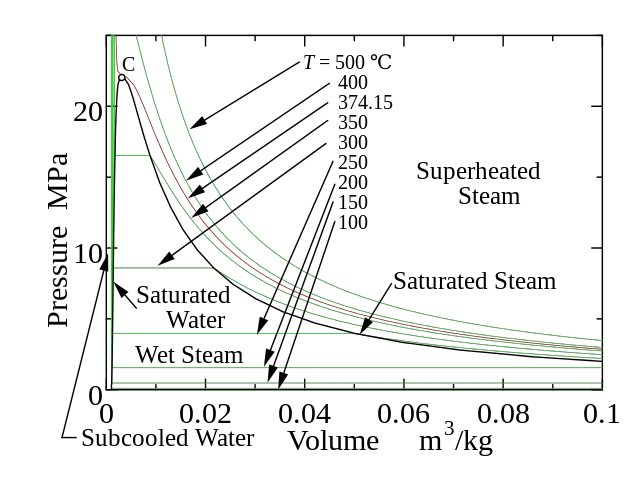What causes high subcooling? It’s a question that many HVAC owners ponder. High subcooling is often a hidden villain, compromising your HVAC system’s efficiency. It’s a complex issue, impacted by various factors that we’ll dive into, shedding light on everything you need to know about high subcooling.

Table of Contents
Quick Overview: What Causes High Subcooling?
The causes of high subcooling are varied, ranging from technical mishaps like oversized condensers and restricted metering devices to simple human errors such as excessive refrigerant charge. These scenarios might set the stage for subcooling to spike, leading to performance inefficiencies in your HVAC system.
Understanding High Subcooling and its Variations
Defining High Subcooling
High subcooling is when the refrigerant in your HVAC system cools below its saturation temperature more than it should. Excessive subcooling, on the other hand, is when this process is taken to extremes, leading to a significant drop in the system’s performance and energy efficiency.
High Subcooling in Different Refrigerants: The Case of 410a
Different refrigerants react differently to subcooling. For instance, if you’ve ever encountered a case where “410a subcooling is too high”, it’s because this specific refrigerant, popular for its environmental-friendly properties, can exhibit high subcooling levels if not carefully monitored.
What Causes High Subcooling — In-Depth Look
The Role of Oversized Condensers
Oversized condensers in an HVAC system can contribute to high subcooling. They hold more refrigerant than necessary, causing the refrigerant to cool more than required, leading to high subcooling.
Consequences of Excessive Refrigerant
Overcharging with refrigerant is another common cause of high subcooling. Too much refrigerant disrupts the delicate balance required for optimal HVAC operation, leading to cooling inefficiencies and other related issues.
The Impact of Restricted Metering Devices
Restricted metering devices can also lead to high subcooling. These devices control the refrigerant flow, and when they’re restricted, the refrigerant cools more than necessary, contributing to high subcooling.
Non-Condensables in the System
Non-condensables in the HVAC system, such as air or nitrogen, can also contribute to high subcooling. They interfere with the refrigerant’s ability to condense and cool properly, leading to increased subcooling.
Outcomes and Implications of High Subcooling
Energy Inefficiency
High subcooling can lead to significant energy inefficiencies in your HVAC system. It forces the system to work harder, using more energy to achieve the desired cooling effect. This increased energy consumption can lead to higher utility bills and a larger carbon footprint.
Reduced System Lifespan
High subcooling can also reduce the lifespan of your HVAC system. The increased stress on the system’s components due to high subcooling can cause premature wear and tear, leading to frequent breakdowns and ultimately, a shorter system lifespan.
Increased Operating Costs
It’s simple math, really. High subcooling equals increased energy usage, which equals higher operating costs. It’s like driving a car with low tire pressure—you’ll burn through fuel faster, and you’ll find yourself at the pump more often. The same principle applies to your HVAC system when dealing with high subcooling.
“What causes high subcooling?” is probably one of the questions you have on the subject. To have all your other subcooling questions answered, click here: Subcooling and Superheating: Easy Guide to Chilled Mastery
Preventive Measures and Remedies for High Subcooling
The Importance of Regular Maintenance and Inspection
Regular maintenance and inspection are your best friends when it comes to preventing high subcooling. Think of it like going for regular check-ups at the doctor’s—it keeps your HVAC system in top-notch condition and catches potential issues early, reducing the chances of high subcooling.
Ensuring Proper Refrigerant Charge
Just as you wouldn’t overfill your car’s gas tank, you shouldn’t overcharge your HVAC system with refrigerant. Maintaining the correct refrigerant charge is crucial in preventing high subcooling. It’s all about finding that sweet spot for optimal performance.
The Role of Correct Sizing of HVAC Components
Size matters, especially when it comes to HVAC components. Having correctly sized components is like wearing a well-fitted suit—it just works better. An adequately sized condenser, for instance, can prevent excessive refrigerant storage and thereby, high subcooling.
Conclusion
High subcooling is a common yet often overlooked issue in HVAC systems. Understanding what causes high subcooling and the effects can help you maintain a more efficient, cost-effective, and long-lasting HVAC system. Remember, knowledge is power, and in this case, it could also mean the difference between a cool, comfortable summer and a hot, expensive one.